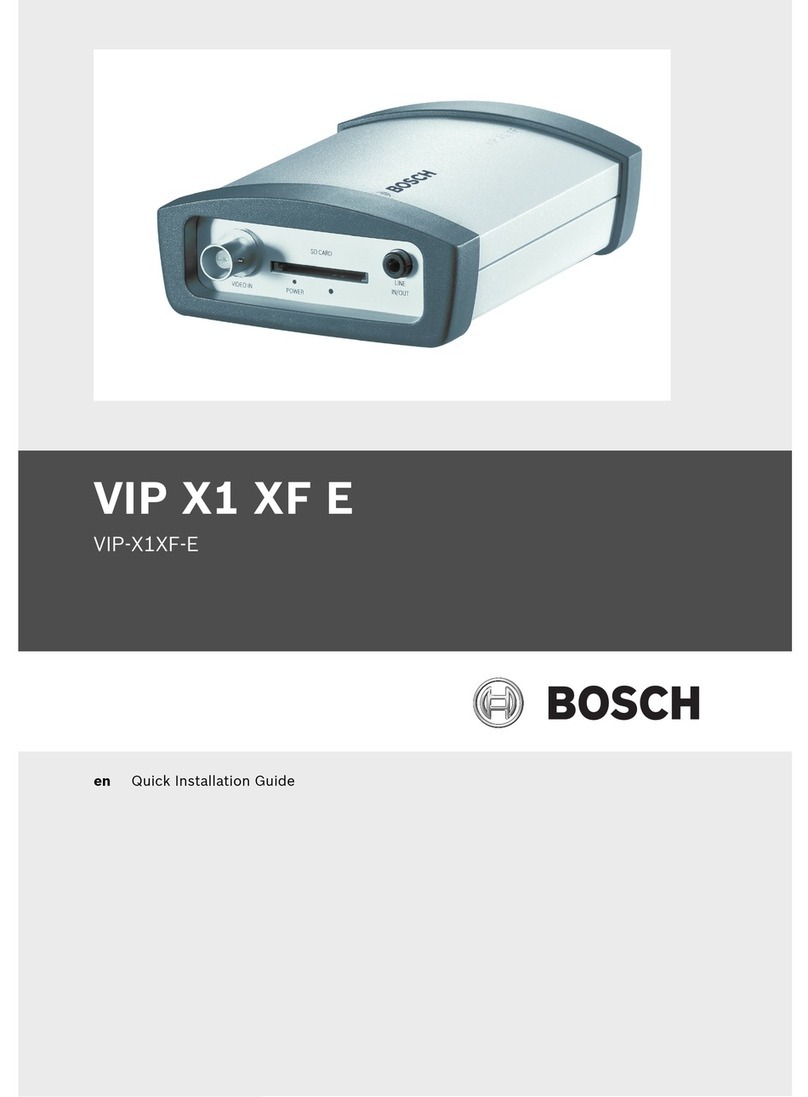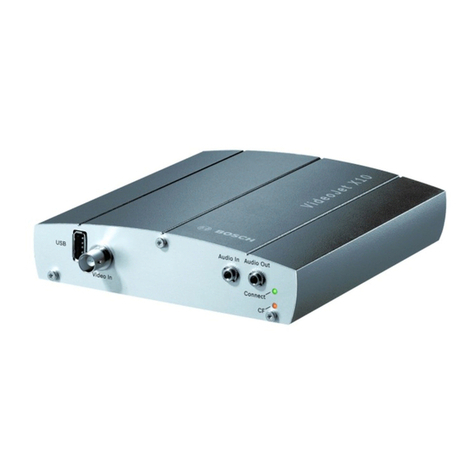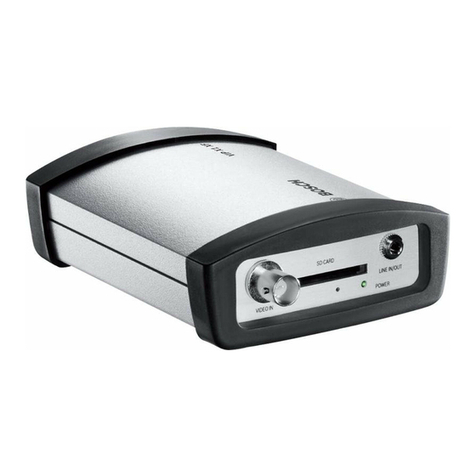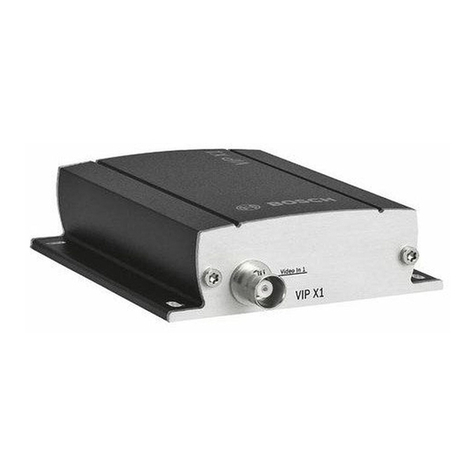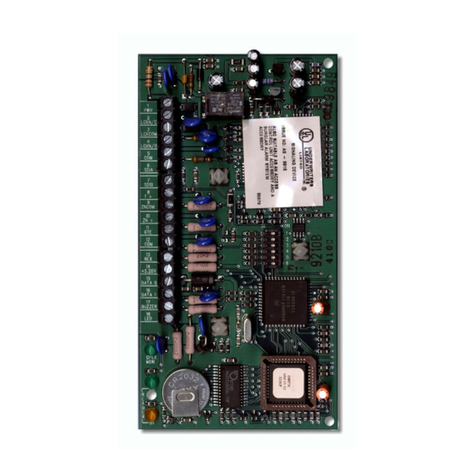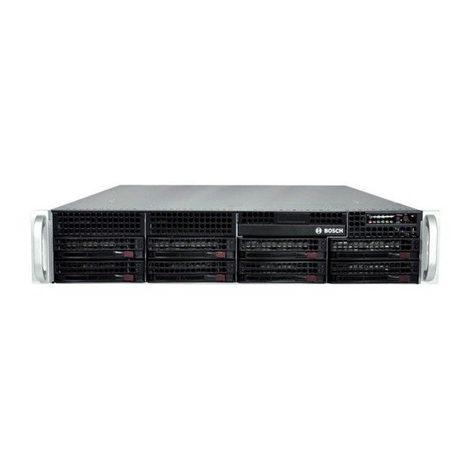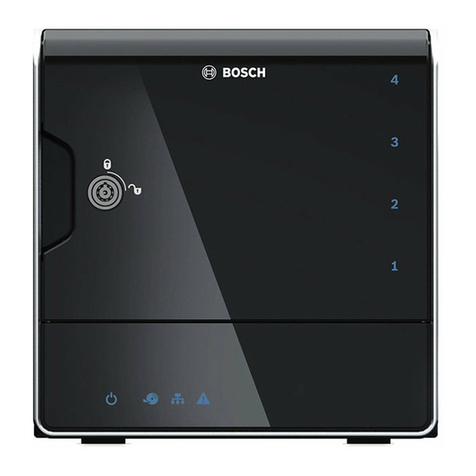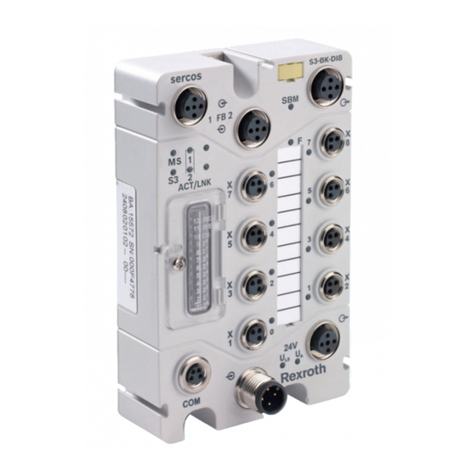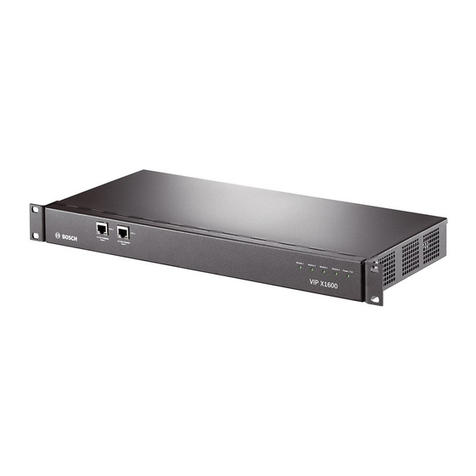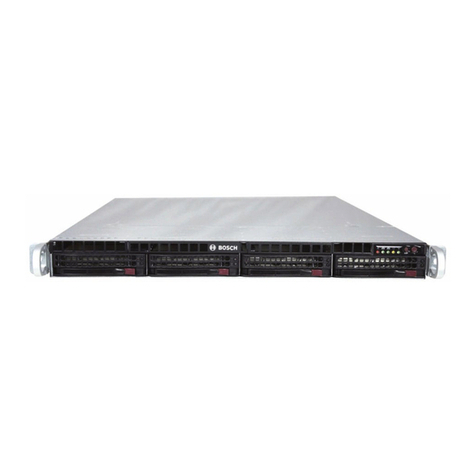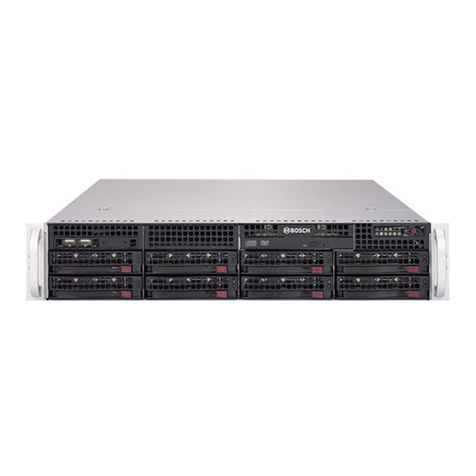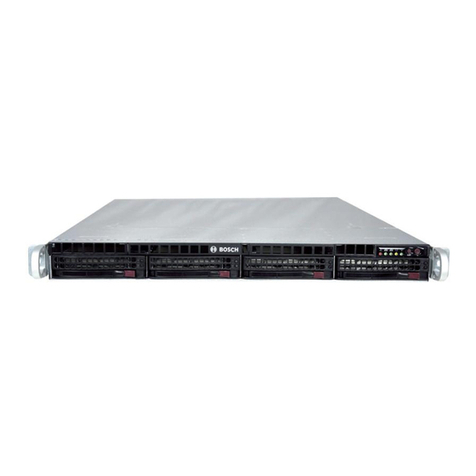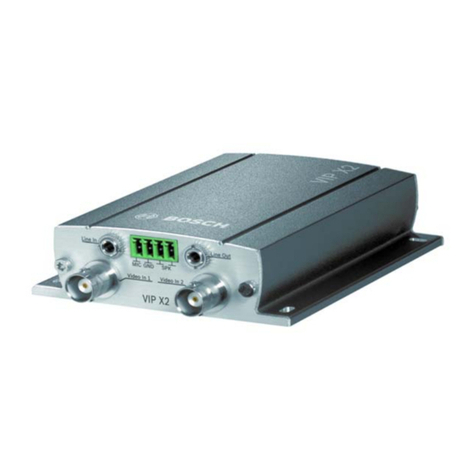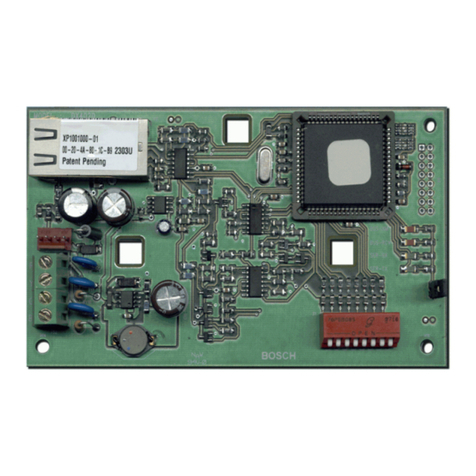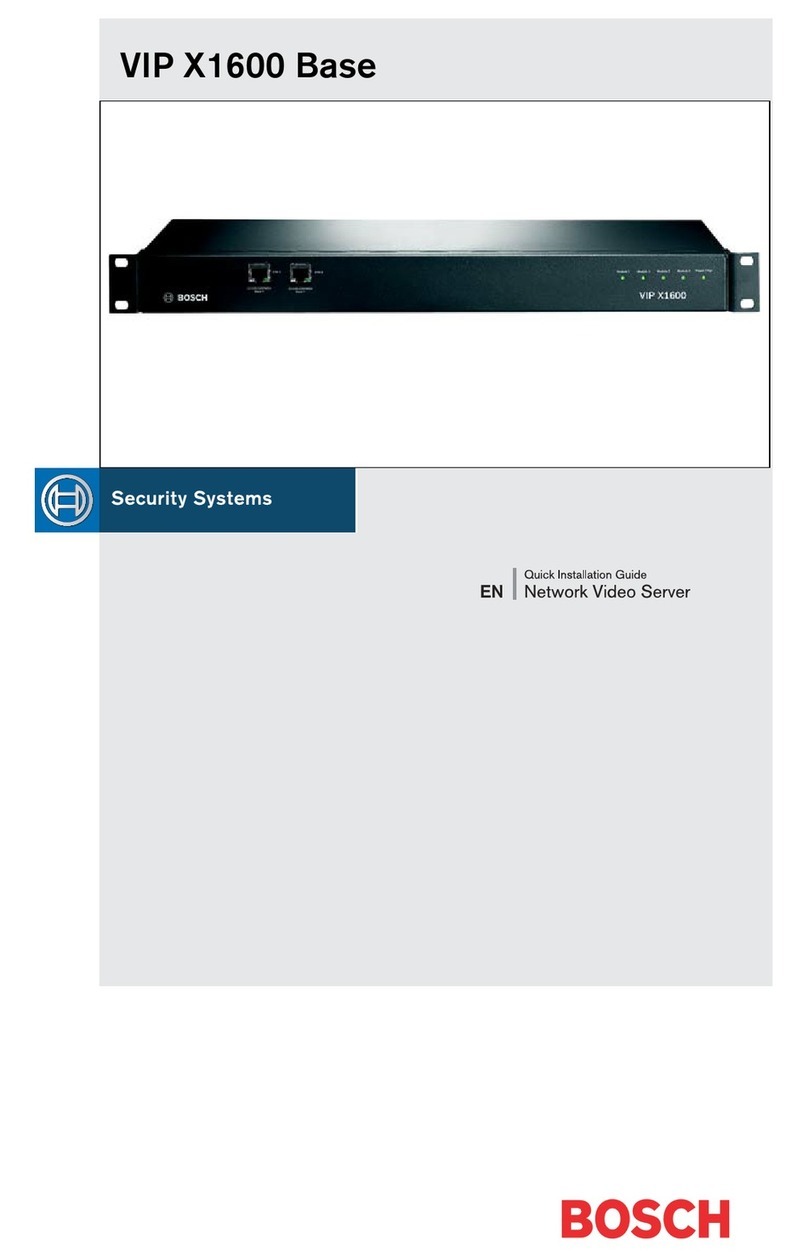
6| en
7 620 320 032/034 | 01.2023 Robert Bosch GmbH
5. The device contains a transceiver. When it is on,
it receives and transmits radio frequency signals.
RF interference can occur if it is used close to TV
sets, radios, computers, or other electrical
equipment.
6. In locations with explosive or potentially explosive
atmospheres, obey all posted signs and turn off
wireless devices such as mobile phone or other
mobile radio terminals. Areas with explosive or
potentially explosive atmospheres include fuelling
areas, below decks on boats, fuel or chemical
transfer or storage facilities, and areas where the
air contains chemicals or particles such as grain,
dust, or metal powders.
Risk of short circuit or re
Overloading the power cord of the device may
result in a short circuit or fire. To prevent
overloading, a fuse with a maximum rating of 3 A
must be installed upstream of the power supply
cables to both terminal 15 and terminal 30.
We strongly recommend that the device be
installed by a suitable specialist workshop.
Note:
According to ElektroStoffV §1 paragraph 2
point 3, the Router CM-R 19 is not subject to
ElektroStoffV (German ordinance on the
restriction of the use of hazardous substances
in electrical and electronic equipment).
fThe device must only be used in approved
vehicles for passenger transport.
fThe device must be installed inside the vehicle.
fThe device must be installed outside the passenger
area (cabin), e.g., in the driver’s area (cockpit) or in
a service area.
fThe device must be installed at least 20 cm away
from persons and pets.
fThe device must be mounted on a solid,
level surface.
fThe mounting location of the device must not be
exposed to heat, liquids, or vibrations.
fThe installation location of the device must offer the
necessary free space for the connection plugs.
fFollowing device installation, the connecting cables
must be secured such that no forces act on the plugs.
fNote that the maximum length for connection
cables with a cross-section of 0.75 mm² is 10 m.
fThe device must only be used with the specified
LTE/GPS antennas.
fThe device must only be operated within the
specified temperature and relative humidity ranges.
For more information about the assembly and connec-
tionof the device, refer to the "Installation drawings"
chapter at the end of this manual.
System requirements
To access the device, you require a computer with the
following:
fInternet browser (Internet Explorer 6.0 or higher,
Firefox, Opera, or Safari)
fWLAN 802.11 a/b/g/n/ac.
Immediate start-up
1. Inserting a SIM card and starting
the device
fInsert the SIM card(s) into the SIM card slot (2)
with the contacts facing down and the recess
pointing towards the device.
fTurn on the vehicle ignition.
The router is started. The power supply LED 8 lights up.
Note:
By using a second SIM card from a suitable
network operator, you can reduce or avoid any
roaming costs that may arise on international
routes. Switching between the two SIM cards
takes place automatically.
2. Establishing a connection to the
device via WLAN
Note:
To establish a WLAN connection, you require
the SSID (network name) and the WLAN key of
the device. The SSID and WLAN key are preset
in the factory. You will find both pieces of
information on the device label.
fUsing a WLAN connection application on your
computer, identify the device’s network via its SSID.
fConnect your computer to the network using
the WLAN key.
Important instructions | System requirements | Immediate start-up
